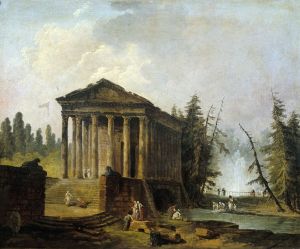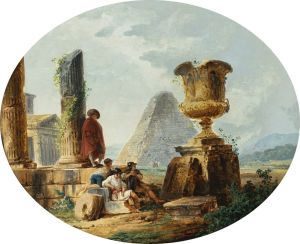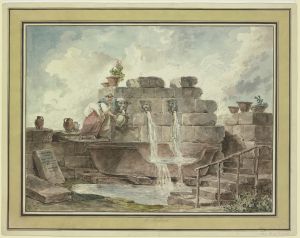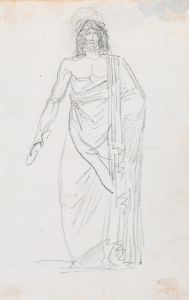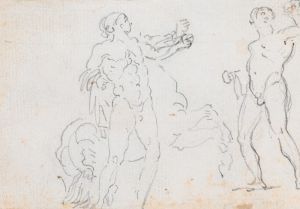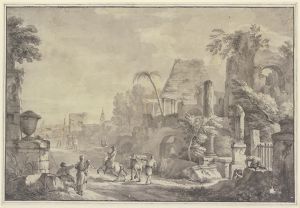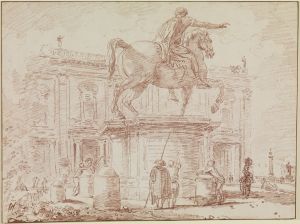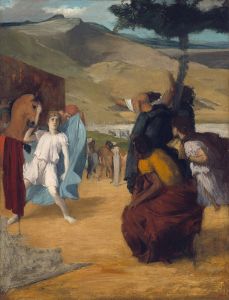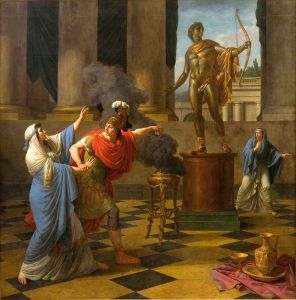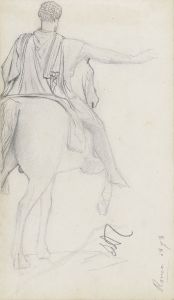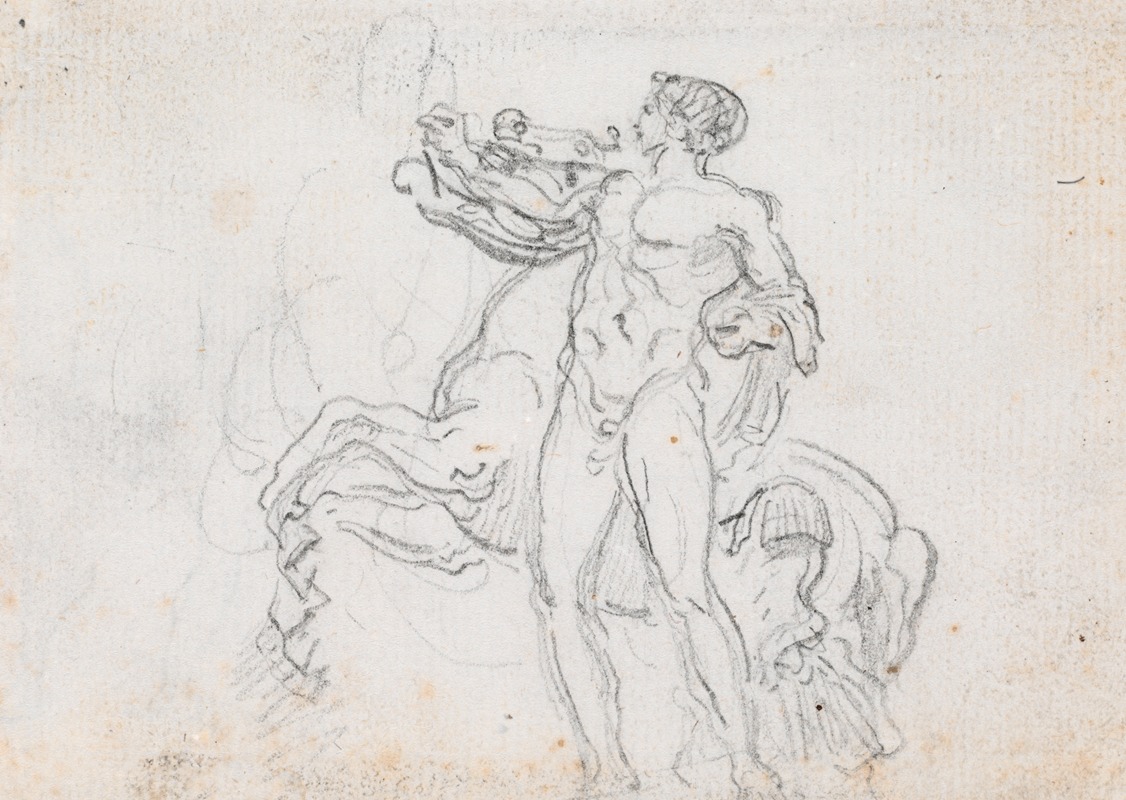
Statue of Alexander and Bucephalus
A hand-painted replica of Hubert Robert’s masterpiece Statue of Alexander and Bucephalus, meticulously crafted by professional artists to capture the true essence of the original. Each piece is created with museum-quality canvas and rare mineral pigments, carefully painted by experienced artists with delicate brushstrokes and rich, layered colors to perfectly recreate the texture of the original artwork. Unlike machine-printed reproductions, this hand-painted version brings the painting to life, infused with the artist’s emotions and skill in every stroke. Whether for personal collection or home decoration, it instantly elevates the artistic atmosphere of any space.
The "Statue of Alexander and Bucephalus" is a painting by the French artist Hubert Robert, who is renowned for his landscapes and depictions of classical ruins. Hubert Robert, born in 1733 and died in 1808, was a prominent figure in the 18th-century French art scene. He was known for his ability to blend real and imaginary elements in his works, often incorporating grand architectural structures and historical themes.
The painting "Statue of Alexander and Bucephalus" captures a moment involving the legendary Macedonian king Alexander the Great and his famous horse, Bucephalus. According to historical accounts, Bucephalus was a horse of great stature and strength, and Alexander was the only one who could tame him. This story has been a popular subject in art and literature, symbolizing the bond between a great leader and his loyal steed.
In Hubert Robert's depiction, the focus is on a statue that commemorates this legendary duo. The painting likely features a classical setting, consistent with Robert's style, which often included ruins and grandiose architectural elements. The statue itself would be rendered with attention to detail, showcasing the artist's skill in capturing the textures and forms of both the horse and its rider.
Hubert Robert's works are characterized by their romanticized view of antiquity, and this painting is no exception. The use of light and shadow, the composition, and the atmospheric perspective all contribute to the sense of grandeur and timelessness that Robert sought to convey. His ability to evoke a sense of history and nostalgia through his art has made his works enduringly popular.
The "Statue of Alexander and Bucephalus" is part of Robert's broader oeuvre, which includes numerous paintings and drawings of ruins, landscapes, and historical scenes. His works are held in high regard and can be found in major museums and collections around the world, including the Louvre in Paris and the Hermitage Museum in St. Petersburg.
Hubert Robert's contribution to art extends beyond his paintings. He was also involved in the design and decoration of gardens and architectural projects, bringing his artistic vision to life in various forms. His influence can be seen in the neoclassical movement and in the works of other artists who admired his ability to blend the real with the imagined.
In summary, the "Statue of Alexander and Bucephalus" by Hubert Robert is a testament to the artist's skill in capturing historical and classical themes. Through his masterful use of composition, light, and detail, Robert brings to life the legendary story of Alexander the Great and his horse, creating a work that continues to be appreciated for its artistic and historical significance.






